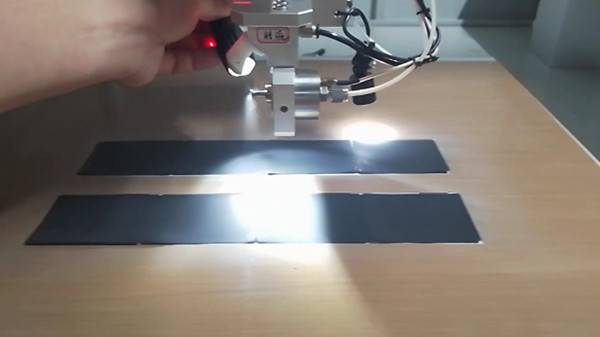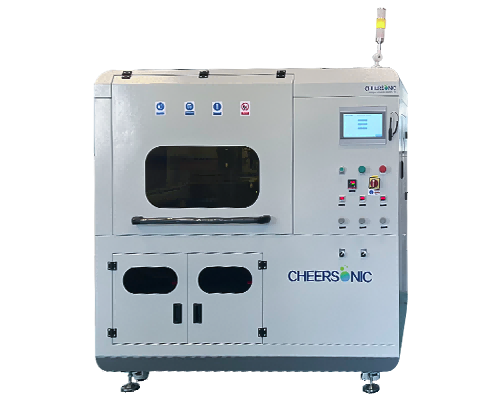AEM Electrolyzer Ultrasonic Spraying
Anion exchange membrane: key component of AEM electrolyzer and the innovative power of ultrasonic spraying
In the complex system of AEM electrolyzer, anion exchange membrane is a core component, and its importance is self-evident. It has two key responsibilities: first, as a key internal channel, it undertakes the important task of conducting OH−; second, it plays the role of a safety barrier, effectively isolating the hydrogen produced by the cathode and the oxygen produced by the anode, thereby avoiding possible dangerous accidents and laying a solid foundation for the stable operation of the entire electrolyzer.
AEMs have a decisive influence on the overall performance and durability of the electrolyzer. From a microscopic perspective, the structure of AEMs is composed of different cationic groups and polymer backbones. The cationic group is mostly quaternary ammonium, and the common polymer backbones are polyarylene ether, polystyrene, polysulfone, polyethersulfone or polyoxyphenylene. Numerous research results show that the polymer backbone structure is mainly related to the mechanical properties and thermal stability of the membrane; the cationic group plays a key role in the ion exchange capacity, ion conductivity and transmission number; more importantly, the polymer backbone and the cationic group work together to determine the chemical stability of the membrane. Therefore, the overall structure of the polymer has a profound impact on the degradation mechanism and degradation rate of the membrane.
As the most cutting-edge water electrolysis technology at present, although AEM electrolysis has broad prospects, its development history is still short, and the research on high-performance AEMs is still in the early exploration stage. Compared with the mature proton exchange membrane, the anion exchange membrane exposes obvious shortcomings. In terms of ion conductivity, the conductivity of OH− in the anion exchange membrane is only about half of that of H+ in the proton exchange membrane, resulting in poor ion conductivity. From the perspective of stability, when AEMs are in an alkaline environment and a temperature range of 60 to 80°C, the polymer backbone and organic cationic groups are easily attacked by OH−, which in turn causes chemical degradation, and ultimately causes a sharp decline in the mechanical properties and ion conductivity of the membrane. It is precisely because of the relatively low ion conductivity and durability that AEM electrolysis has been severely hindered from moving towards large-scale promotion and application.
In this context, Cheersonic innovatively introduced ultrasonic spraying technology, which brought hope for the improvement of anion exchange membrane performance. Ultrasonic spraying technology has shown excellent application value in the preparation process of anion exchange membranes by virtue of its unique advantages.
In terms of application, Cheersonic’s ultrasonic spraying can accurately and evenly spray specific materials on the surface of anion exchange membranes. By precisely controlling the spraying parameters, an extremely uniform and dense functional coating can be constructed on the membrane surface. This coating has a significant effect on improving the microstructure of the membrane, and can optimize the ion transmission channel, thereby improving the ion conduction efficiency. For example, in actual production, the anion exchange membrane prepared by ultrasonic spraying technology has a more regular arrangement of internal ion channels, which effectively reduces the obstacles in the ion transmission process and creates favorable conditions for the rapid conduction of OH−.
From the perspective of advantages, ultrasonic spraying has a high degree of accuracy and controllability. Compared with traditional spraying methods, it can accurately control the amount of material sprayed within a very small error range, ensuring that each membrane surface can obtain accurate and consistent coating thickness. This not only ensures the stability of product quality, but also minimizes material waste and reduces production costs. Moreover, during the ultrasonic spraying process, the material is evenly dispersed in the form of extremely fine particles, which can achieve a closer combination with the membrane surface, significantly enhance the adhesion between the coating and the membrane substrate, and make the functional coating less likely to fall off during long-term use, effectively ensuring the long-term stability and durability of the anion exchange membrane.
Cheersonic’s ultrasonic spraying technology has injected powerful power into the performance improvement of anion exchange membranes, and is expected to help AEM electrolysis break through the current technical bottlenecks, promote its new leap in large-scale applications, and contribute key forces to the transformation of the future energy field.
About Cheersonic
Cheersonic is the leading developer and manufacturer of ultrasonic coating systems for applying precise, thin film coatings to protect, strengthen or smooth surfaces on parts and components for the microelectronics/electronics, alternative energy, medical and industrial markets, including specialized glass applications in construction and automotive.
Our coating solutions are environmentally-friendly, efficient and highly reliable, and enable dramatic reductions in overspray, savings in raw material, water and energy usage and provide improved process repeatability, transfer efficiency, high uniformity and reduced emissions.
Chinese Website: Cheersonic Provides Professional Coating Solutions




